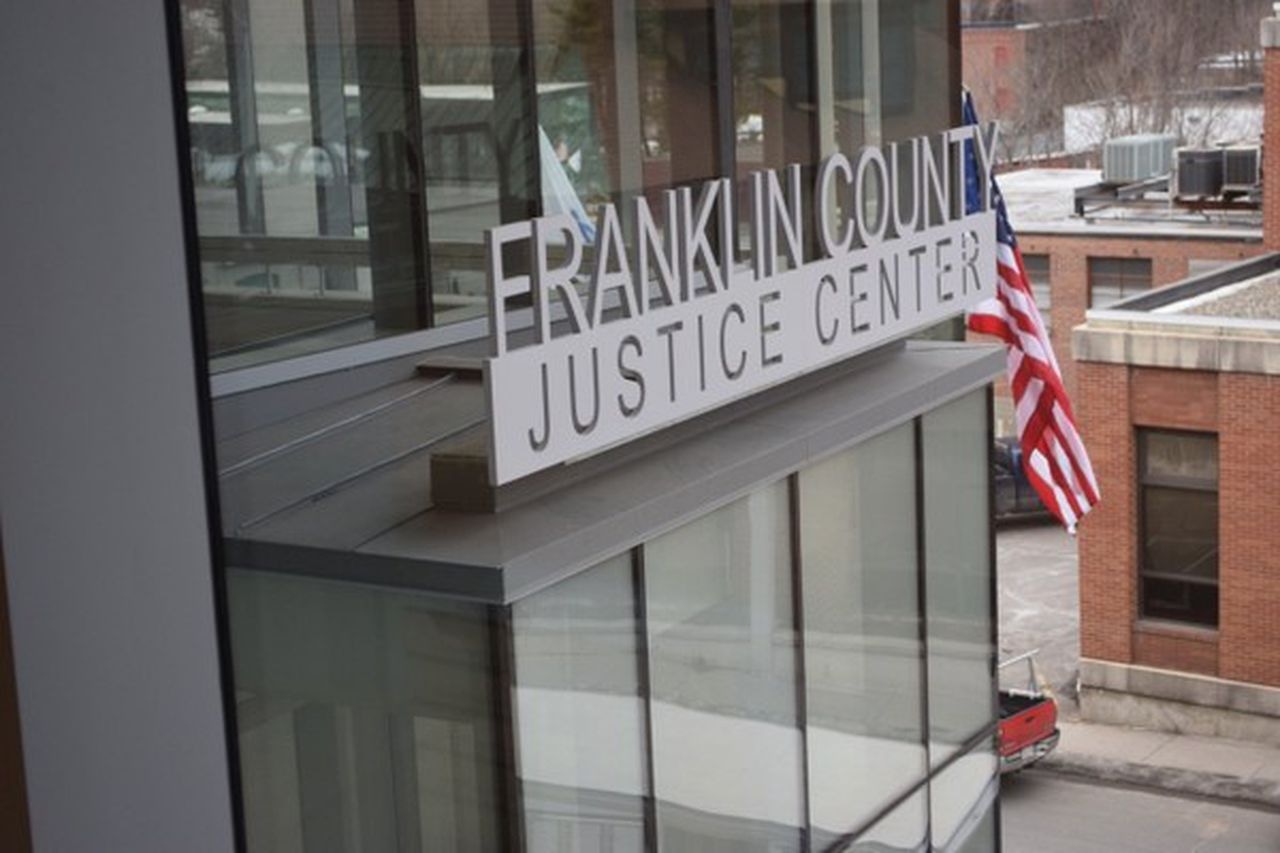At the start of the year, I had a realization: I could go to the birthplace of the chocolate chip cookie and eat a chocolate chip cookie.
By that, I mean I could go to a certain parking lot in Whitman, a small town south of Boston, and eat a chocolate chip cookie I bought next door.
You see, Ruth Graves Wakefield invented the chocolate cookie in the 1930s at the Toll House restaurant — hence the term “Toll House cookie.” But if you go there now, all you’ll find is a parking lot between a Walgreens and a Wendy’s, which is where I got my cookie.
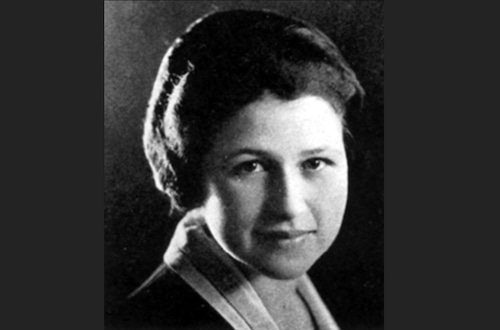
Ruth Graves Wakefield, as pictured in her college yearbook during her time at Framingham State University (then called the Normal School)(Courtesy, Framingham State University Archives, 1924 Dial Yearbook – Graduation photo of Ruth Graves)
In that parking lot, there’s an old sign board and a plaque explaining the history of the Toll House, including that it was built in 1706 and burned down in 1984.
That’s cool. But wait a minute. Why does the town website say it was built in 1817? That was weird. But I was sure some quick internet searches would clear that up.
They did not.
Instead, I spent the next few months going down various rabbit holes, sifting through cookie legends and sorting out the sometimes bizarre history of the Toll House. Eventually, I found myself looking through decades-old documents in town halls and libraries.
Above all else, I just wanted to satisfy my curiosity.
In the end, I wound up with a treasure trove of interesting facts about the chocolate chip cookie and the Toll House that I felt I needed to share. I had two options. The first was to randomly spout them at parties and strangers on the street until they walked away from me. The second was to simply open up my historical hoard to readers.
Here’s what I learned:
Despite what legends and the landmark plaque say, the chocolate chip cookie was not invented by accident.
The story of the chocolate chip’s origin has been told and retold countless times. For example, the plaque at the Toll House monument claims that Wakefield “lacked the nuts called for in the recipe” for cookies and, in a pinch, decided to chop up some Nestle chocolate and throw that in.
However, the story of serendipitous success is simply a legend that gained legs over the years. Wakefield herself debunked that narrative in the 1970s, telling multiple outlets that she worked out the recipe while traveling abroad.
Wakefield was an innovative baker and meticulous business owner.
Nearly every account of the Toll House restaurant depicts Wakefield as a brilliant, detail-oriented chef who studied cooking in college. She was known for traveling the world and experimenting with foods she discovered.
The Toll House was also known for impeccable service that was so precise, there were exact guidelines for how far away from the edge of the table the wait staff should place silverware.
The Toll House was originally built in 1817 – not 1709.
Before it was the Toll House, the property at the corner of Bedford and Auburn streets was a private residence. Construction was started by Christopher Bates. Later, Bates’ sister, Polly, and her husband, Lebbeus Smith, lived there.
The property remained a private residence until the 1900s. It only served food for a few years until the Wakefields bought it.
No one knows where the date 1709 really comes from.
The reason that many people believed the Toll House was built in 1709 is because that number was written on the property’s chimney. It was already there when the Wakefields took over. According to local historian Martha Campbell, Wakefield took that date and ran with it, creating “an imaginative history for the restaurant that had no basis in fact.”
Ruth and Kenneth Wakefield bought the original building in 1930 for $6,500.
Meanwhile, there are some apartments in Boston where $6,500 won’t even cover a month’s rent.
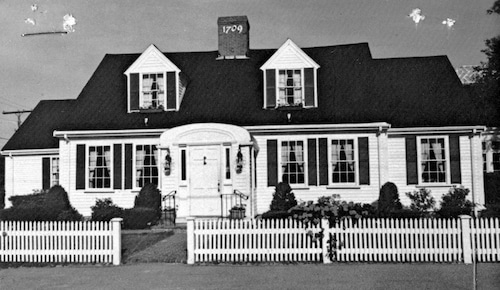
A scanned image of the original Toll House Restaurant in Whitman, Massachusetts (circa 1982), as it appears in the Massachusetts Cultural Resource Information System.(Courtesy Massachusetts Historical Commission, Office of the Secretary of the Commonwealth)
The building was never an actual toll house.
The Toll House restaurant was on a road where tolls were collected from 1807 to 1820. During that time, there was a toll house across the street from the restaurant. However, it wasn’t an inn where travelers would stop. It was closer to the toll booths you see on modern highways and had a literal pike to act as a gate — hence the term, “turnpike.”
Wakefield never called it a “chocolate chip cookie.”
Mostly because chocolate chips didn’t exist yet. Instead, she called it the Toll House Chocolate Crunch Cookie.
Wakefield is why chocolate chips exist.
Initially, Wakefield had to chop up bars of chocolate to add to her recipes. Eventually, she reached out to Nestle to ask if they could sell her smaller pieces, which would make it easier. This led to the popularization of chocolate chips, which Nestle called “morsels.”
“Toll House cookies” are no longer trademarked.
In 1983, a federal judge ruled that “Toll House cookies” had entered common language and were no longer subject to copyright. It’s the same as how once-trademarked terms like “thermos” or “aspirin” are now used as common descriptors for a product.
The chocolate chip cookie is the state cookie of Massachusetts.
In 1997, a group of students from Somerset started a campaign to make the chocolate chip cookie the state cookie of Massachusetts. They were later joined by state Rep. Kathleen Teahan of Whitman, who once worked as a salad-maker at the Toll House, to help in the campaign
Despite opposition from the governor and the pro-Fig Newton lobby.
The battle for the title of “state cookie of Massachusetts” was a tough one. Many, including then-Governor William Weld, thought the Newton-based Fig Newton deserved the title. However, a bill declaring the chocolate chip cookie as the state cookie was signed into law by Weld himself.

Republican presidential candidate former Massachusetts Gov. William Weld in Manchester, N.H. on Dec. 16, 2019. (AP Photo/Charles Krupa)AP
While the Fig Newton was named the official “fruit cookie,” Newton did not handle the decision well.
“This is an outrage, a travesty of justice! This is worse than when the Red Sox got robbed in the 1986 World Series,” Newton Mayor Richard Concannon told the Boston Herald at the time.
The chocolate chip cookie wasn’t actually on the menu at the toll house.
Instead, it was simply used as a free little sidekick that came with an order of ice cream.
Wakefield seemed to shy away from the fame of the cookie – until her later years.
Wakefield rarely spoke publicly about the cookie until the 1970s, a few years before her passing in 1977. According to Wyman, those who knew Wakefield say she had “moved on” from the cookie.
The original Toll House cookie was a spin on a butterscotch cookie – not a “Butter Drop Do” cookie.
According to Wyman, the misconception likely comes from a 1960 Nestle brochure that notes that the butter drop do is “probably the earliest ancestor of the Toll House cookie.” Later Nestle publications misconstrued the story from there.

A pile of chocolate chip cookies, which were first invented by Ruth Graves Wakefield at the Toll House restaurant in the 1930s.(Sebastian Restrepo, MassLive)
from the Normal School (now Framingham State University) with a degree in household arts
The original cookie is different from what we know now.
Modern chocolate chip cookies aim to be big, soft and chewy. When Wakefield first started baking them, they were smaller, harder and crispier.
Ruth Graves Wakefield went to Framingham State.
Before her marriage to Kenneth Wakefield, Ruth Graves graduated from the Normal School (now Framingham State University) with a degree in household arts.
In her college yearbook, Ruth Graves was called “Gravy.”
While there, she apparently had an interesting nickname, according to the caption on her yearbook photo:
“Capable, loyal, generous, helpful. That’s Gravy! Ruth can plan her work better than most of us and accomplishes what she sets out to do. Gracy is a real friend when you need her.”
The original Toll House restaurant had a room with a tree in the middle of it.
One of the rooms in the restaurant — fittingly called the “Tree Room” — had a live tree growing in the middle of the room and through the ceiling. It was only open in warm months.
The Toll House grew quickly.
When the restaurant first open, it had seven tables. Within 3 years, the Toll House had 64 tables and claimed to serve up to 2,000 guests per day.
It then became a nightclub and a “haven for wandering hippies.”
When the Wakefields retired in 1986, the Toll House was sold and turned into a nightclub called Noel’s. It was a dud, and the new owners walked away soon after.
“During the months of neglect, the Toll House, then called Noel’s, became a haven for wandering hippies who apparently lived within its walls from time to time and obviously destroyed most of the fine old interior of the house as well as the beautiful outdoor gardens,” the South Shore News one wrote.
The Toll House restaurant was revived for a while.
After it was purchased and restored by Frank and Carolyn Sacconne, the Toll House had a revival that stretched from 1973 to 1984.
It was lost suddenly after a fire.
Around 11:30 p.m. on New Year’s Eve, a grease fire spread from the kitchen to the attic. Fire departments from five towns responded, but the Toll House was lost in the blaze.
After the Toll House burned down, a company tried to bring it back.
Callahan Construction purchased the property and tried to find a restaurateur who could bring back the Toll House. After six years of trying, the company sold the land to make way for condos, a Wendy’s, in 1993, and a Walgreens in 2006.
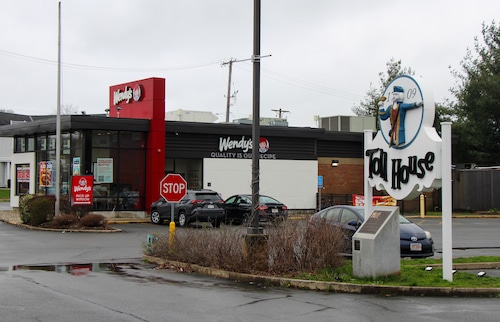
A restored sign at the original site of the Toll House restaurant in Whitman, Massachusetts. The Toll House, which burned down in 1984, was where Ruth Wakefield invented the chocolate chip cookie in the 1930s.(Nick O’Malley, MassLive)
For a while, the site was an eyesore.
Little had been done with the Toll House property since the fire. When the Wendy’s moved in, Dick Cole, then chairman of the Whitman board of selectman, said he had mixed feelings about losing the Toll House, but admitted “it’s better than having nothing at all.”
Now Walgreens is responsible for it.
In 2006, Whitman approved the construction of a Walgreens on the site. But there was one condition. Walgreens would be responsible for restoring a sign that survived the fire and marked where the old Toll House stood.
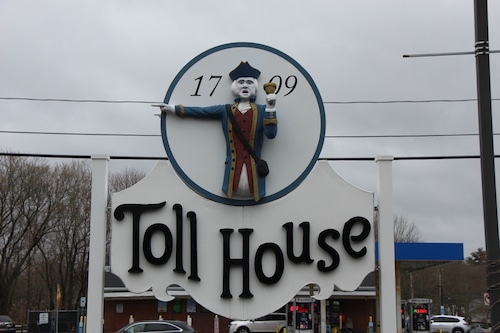
A restored sign at the original site of the Toll House restaurant in Whitman. The Toll House, which burned down in 1984, was where Ruth Wakefield invented the chocolate chip cookie in the 1930s.(Nick O’Malley, MassLive)
The man who helped restore the old sign later became a Mass. legislator.
The sign was restored by a local company called Poiyant Signs. One of the company’s employees who organized the restoration effort was a Whitman resident named Geoff Diehl. He later became a Republican state representative and ran an unsuccessful campaign for governor of Massachusetts against Maura Healey.
The sign you see today is only half of what was once there.
Diehl said the sign that stands today is 100% of the original design and about 50% of the original material of what stood there in 1984.
But it’s not the “original” sign.
Diehl believes the sign that stands at the Toll House monument is the third or fourth version. He’s heard rumors that the original was spotted at an oddities store in Western Massachusetts and said he plans to buy it if he can track it down.

Geoff Diehl, a former state legislator from Whitman, helped restore the Toll House sign. (Hoang ‘Leon’ Nguyen/The Republican)
The cookies gained a national following after World War II.
According to the New York Times, the cookies grew in popularity when soldiers from Massachusetts shared their care packages from home with others
Prices at the Toll House were mightly low in 1943.
According to a 1943 menu, a whole “cold boiled lobster” would cost $1.50, while an order of lobster thermidor would cost $2.
Chicken soup? That’s 25 cents. A club sandwich cost $0.85.
Ruth Graves won over her eventual husband with her cooking.
In a history of Toll House published by the restaurant, she claimed Kenneth Wakefield “loved me from the first taste of my potato salad.”
Kenneth Wakefield turned down a scholarship for Ruth’s sake.
Kenneth Wakefield had been offered a scholarship to George Washington University. Instead, he passed up the opportunity to help Ruth get through school. Kenneth eventually worked at the Cudahy Meat Packing Company.





